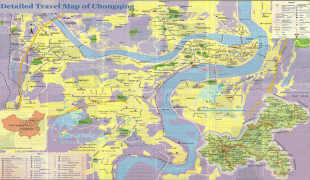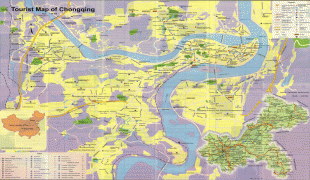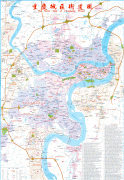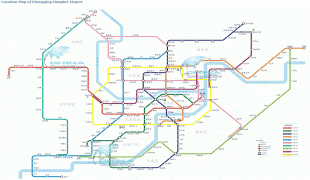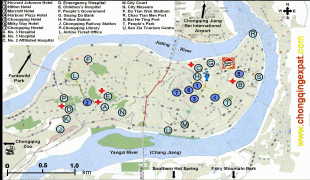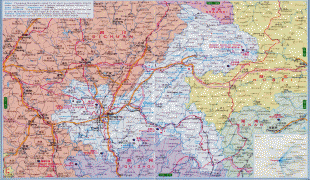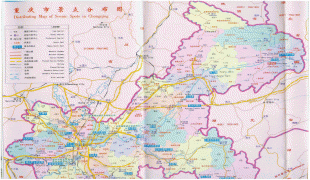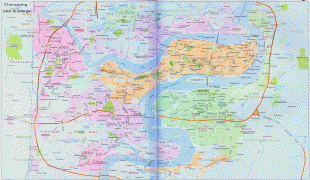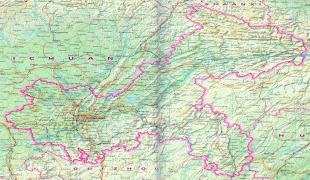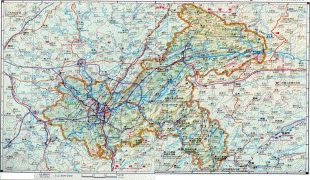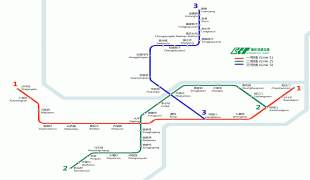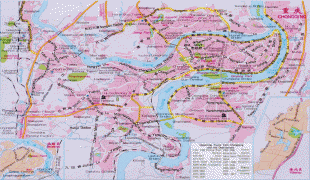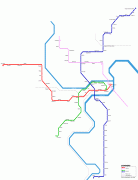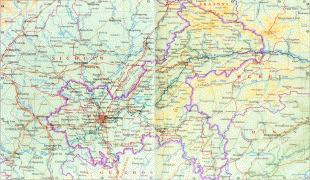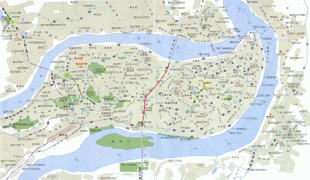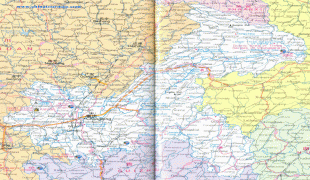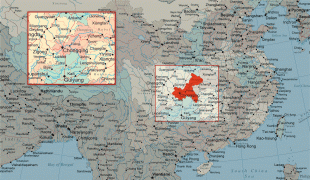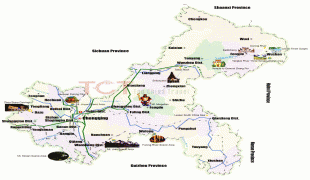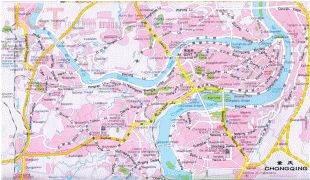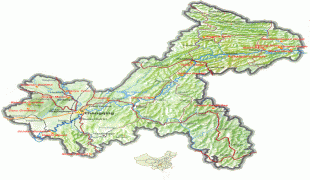Chongqing
Administratively, it is one of the four municipalities under the direct administration of the central government of the People's Republic of China (the other three are Beijing, Shanghai, and Tianjin), and the only such municipality located deep inland. The municipality of Chongqing, roughly the size of Austria, includes the city of Chongqing as well as various discontiguous cities. Due to a classification technicality, Chongqing municipality can claim to be the largest city proper in the worldthough it does not have the world's largest urban area. Chongqing is the only city in China with a permanent population of over 30 million. Chongqing is the fourth largest Chinese city by urban population, with urban population of 16.34 million as of the 2020 estimation, after Shanghai, Beijing and Shenzhen. According to the 2010 census, Chongqing is the most populous Chinese municipality, and also the largest direct-controlled municipality in China, containing 26 districts, eight counties, and four autonomous counties.
During the Republic of China (ROC) era, Chongqing served as its wartime capital during the Second Sino-Japanese War (1937–1945). The current municipality was separated from Sichuan province on 14 March 1997 to help develop the central and western parts of China.
Chongqing has an extensive history and a rich culture. As one of China's National Central Cities, it serves as a financial center of the Sichuan Basin and the upstream Yangtze. It is a major manufacturing and transportation center; a July 2012 report by the Economist Intelligence Unit described it as one of China's "13 emerging megalopolises". Chongqing Jiangbei International Airport, a major aviation hub serving Chongqing metropolitan areas and Western China, is one of the top 50 busiest airports in the world, and the city's monorails system is the world's longest and busiest monorails system with the greatest number of stations (70). Chongqing is ranked as a Beta (global second-tier) city. Chongqing is also the headquarters of the Changan Automobile, one of the "Big Four" car manufacturers of China, and hosts more than 10 foreign consulates, making it the fifth major city to host more foreign representatives than any other city in China after Beijing, Shanghai, Guangzhou and Chengdu.
Chongqing is one of the top 50 cities in the world by scientific research outputs as tracked by the Nature Index, and home to several notable universities, including Chongqing University, Southwest University, Chongqing University of Posts and Telecommunications, Southwest University of Political Science and Law, Chongqing Normal University, Sichuan International Studies University, Sichuan Fine Arts Institute and Chongqing University of Technology.
Map - Chongqing
Map
Country - China
 |
 |
| Flag of China | |
Modern Chinese trace their origins to a cradle of civilization in the fertile basin of the Yellow River in the North China Plain. The semi-legendary Xia dynasty in the 21st century BCE and the well-attested Shang and Zhou dynasties developed a bureaucratic political system to serve hereditary monarchies, or dynasties. Chinese writing, Chinese classic literature, and the Hundred Schools of Thought emerged during this period and influenced China and its neighbors for centuries to come. In the third century BCE, Qin's wars of unification created the first Chinese empire, the short-lived Qin dynasty. The Qin was followed by the more stable Han dynasty (206 BCE–220 CE), which established a model for nearly two millennia in which the Chinese empire was one of the world's foremost economic powers. The empire expanded, fractured, and reunified; was conquered and reestablished; absorbed foreign religions and ideas; and made world-leading scientific advances, such as the Four Great Inventions: gunpowder, paper, the compass, and printing. After centuries of disunity following the fall of the Han, the Sui (581–618) and Tang (618–907) dynasties reunified the empire. The multi-ethnic Tang welcomed foreign trade and culture that came over the Silk Road and adapted Buddhism to Chinese needs. The early modern Song dynasty (960–1279) became increasingly urban and commercial. The civilian scholar-officials or literati used the examination system and the doctrines of Neo-Confucianism to replace the military aristocrats of earlier dynasties. The Mongol invasion established the Yuan dynasty in 1279, but the Ming dynasty (1368–1644) re-established Han Chinese control. The Manchu-led Qing dynasty nearly doubled the empire's territory and established a multi-ethnic state that was the basis of the modern Chinese nation, but suffered heavy losses to foreign imperialism in the 19th century.
Currency / Language
| ISO | Currency | Symbol | Significant figures |
|---|---|---|---|
| CNY | Renminbi | ¥ or 元 | 2 |
| ISO | Language |
|---|---|
| ZH | Chinese language |
| UG | Uighur language |
| ZA | Zhuang language |






